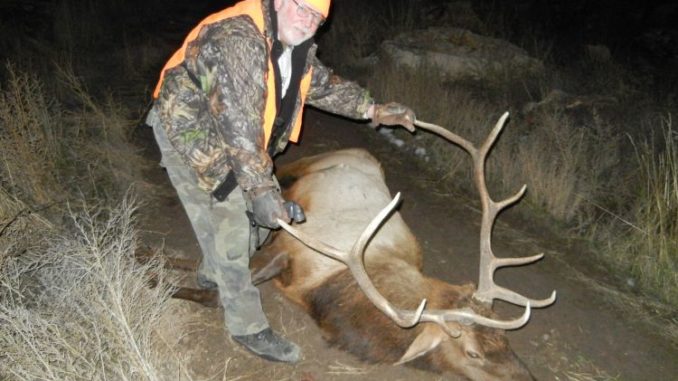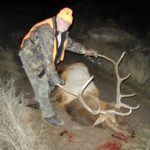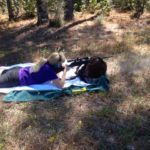
Not long after July 4, I’m pretty well burned out on fishing and already starting to think about hunting season.
Yes, it is a long way off, but then again dove season will open in two months and some archery seasons out west will open as early as Aug. 15.
Even if early season hot-weather hunting has no appeal, a lot of things still need to be done before October when the “real” hunting begins.
If you are like me and have membership in a hunting lease, now is the time to get busy.
Hunting lease agreements are usually up for renewal in July. In many cases lease fees have increased for the upcoming season. Lease members must be notified of the increase and canvassed to determine whether they will remain members or drop out due to the increased costs or for other reasons.
Vacancies must be filled, and that’s not always easy to do, particularly during the summer when many people are just not focused on hunting yet.
Lease members should also meet in July to discuss chores and work, such as planting food plots, cutting firewood and boundary maintenance. Harvest goals and rule changes need to be considered, along with correcting any problems from the previous hunting season.
Everyone in our group gets along exceptionally well, and disagreements or rule violations are very rare. That’s more than can be said for many clubs.
Non-resident draw results for several of the western states are posted in June, and licenses start arriving in the mail in mid-June. Those of us lucky enough to draw prized tags will need to start making plans by early July.
Deposits must be sent and contracts signed with outfitters. Arrival dates and travel plans, including flight and hotel reservations, need to be booked early.
Those of us who will be taking the do-it-yourself route really have a lot of work to do if we want any chance at success. Phone calls or emails to the state fish and wildlife folks can go a long way toward pointing a hunter in the right direction.
Just remember the same information was given to every other hunter who called. So after being pointed in the right direction, download the maps and start looking for out-of-the-way or remote locations to get away from the crowd.
Obtain a copy of the regulations and become familiar with them. Throw a copy in with your gear. If something in the rules is unclear or unfamiliar, now is the time to talk to someone and clear things up.
Whether you plan to use one or not, locate a taxidermist and a meat processor in the area of the hunt. Here’s why: I have seen quite a few hunters who had intentions of handling their own meat and trophy capes on a hunt far from home. Some were quite capable of doing so, but things happen.
Warm weather or travel delays can risk spoilage. Sickness or an accident can render a hunter incapable of handling the job.
Many simply don’t realize just how big even an average-sized elk really is until they walk up to their first one. It’s a lot bigger job than boning out a whitetail.
So have a backup plan for handling the meat. I have never considered having someone else process a deer, pronghorn or hog and have always done my own. By the same token, I have never considered DIY elk processing. It’s just too much good, high-quality meat to risk spoiling, and who wants to tackle the job upon arriving home after two or three long days of travel.
The same goes for taxidermy for the same reasons. Plus consider this: Your regular taxidermist does a great job on whitetails because he does them all the time. He knows ear position, posture and facial features on buck deer.
But how many pronghorn has he done? Mitzi and I have both harvested pronghorn in Wyoming and had the taxidermy done by a Wyoming taxidermist. They are beautiful mounts, and we are happy with the results.
This is also the time to start getting in shape for hunting season. Hunts out west are at higher elevations, even if they are only on the high plains or foothills of the mountains. We sea-level boys just don’t do well up there unless we get in decent shape.
It will make the difference between feeling tired, sore and embarrassed in front of that damned young mountain-man guide or being able to keep up and feel good about it.
Get a wellness checkup and tell your doctor about your hunt plans. He or she will be happy to prescribe a workout and diet plan to get you ready.
Sometimes all it takes is a little walking, jogging or bike riding combined with light weight-lifting to get tuned up.
Also, please consider getting in shape before going to the woods even if you will be hunting close to home. Wading through mud to the duck blind or dragging out a deer has led to more than one heart attack, some of them fatal.
Speaking of getting tuned up, now is a great time to get your rifle ready for the big hunt. Remember that it will all come down to one shot.
I will never forget the time I was in elk camp with a dozen other hunters for the first rifle season in October. We were in elk and listened to bugling bulls as we drifted off to sleep the night before opening morning.
Not long after daybreak, I passed on a 4×4 bull, and then took a smallish 6×6.
Two other hunters were also successful, taking really nice bulls, bigger than mine. My outfitter buddy, Roy Hutt still likes to tease me about that “little bull.”
But I had watched from a distance as one hunter missed a huge bull standing broadside at about 70 yards, with his rifle hitting low and right by a foot or more. Another hunter returned to camp after missing a bull twice; you could actually grab hold of the scope on his borrowed rifle and rattle it in the mounts.
Fortunately, neither bull was crippled in the encounters.
I love rifles. I have more than I need, and my biggest problem is choosing which one to use. I also hand-load ammunition, and enjoy working up hunting loads for deer and elk.
Summer is the perfect time to hand-load and shoot. Once I have the desired velocity and a nice tight group, I’ll sight in for 200 yards — and then shoot groups at 300 and 400 yards (my self-imposed maximum distance to shoot at an animal) to find point of impact at those ranges.
It’s all then written down so I don’t forget or confuse rifles.
Minus the hand-loading, a shooter can simply select good factory ammunition, shoot until he finds a load that performs well in his rifle, sight in and practice, practice, practice.
Get the most from your practice by getting off the bench and shooting from different positions that mimic real hunting situations.
Anticipation is half the fun, and good planning, preparation and practice help to build and inspire confidence.
So get busy now. We have a lot of work to do.




